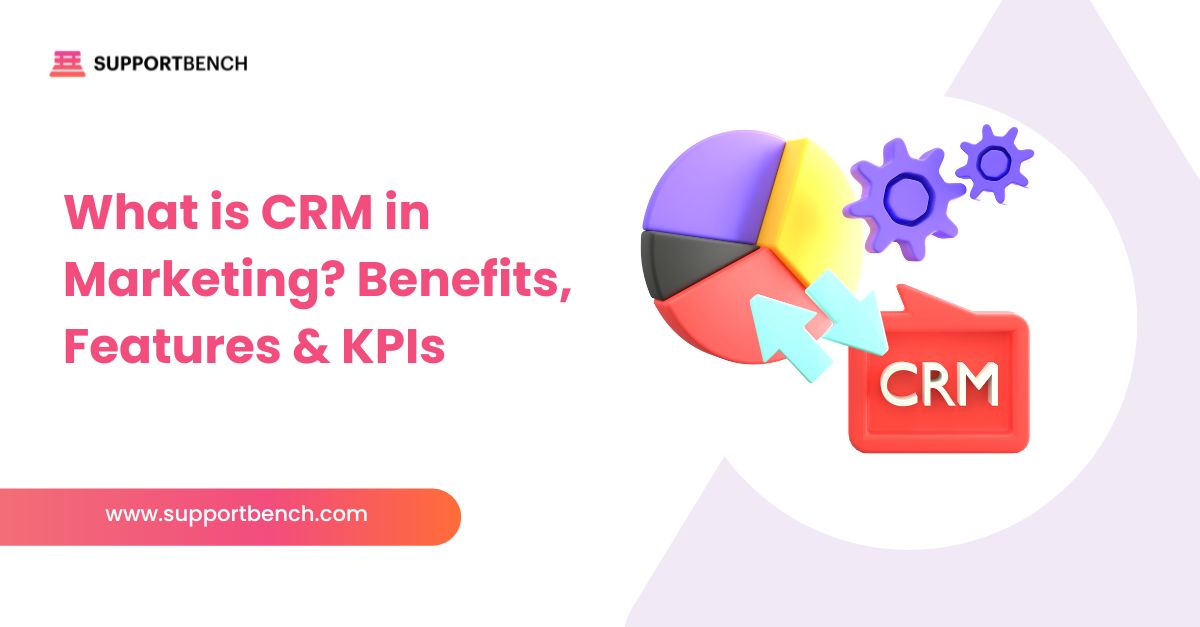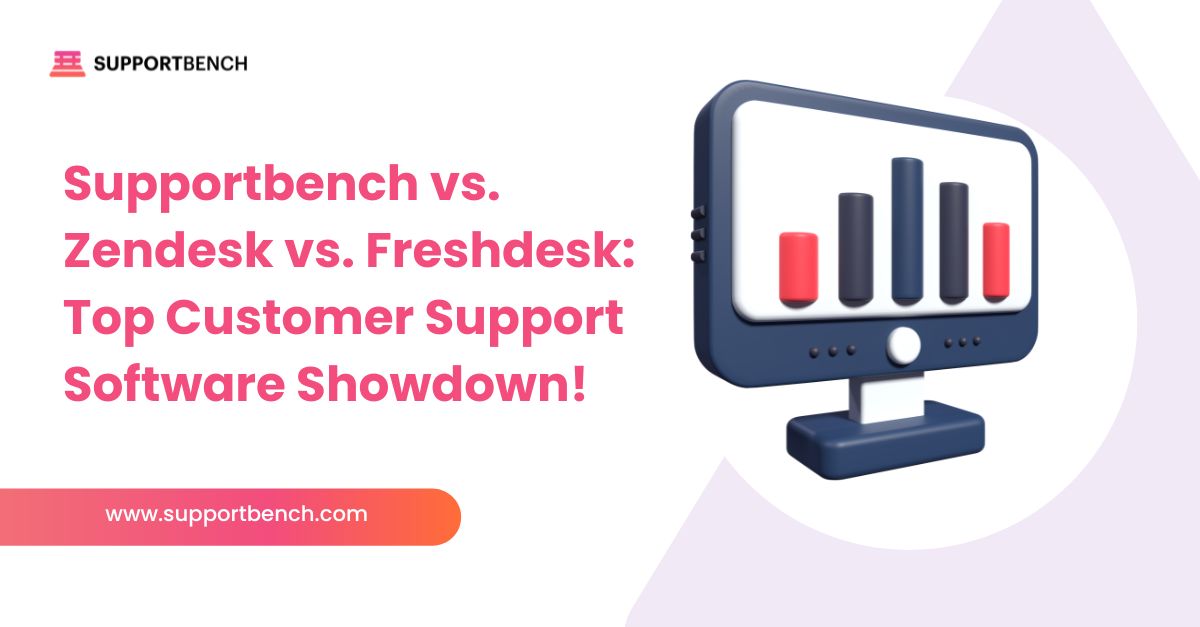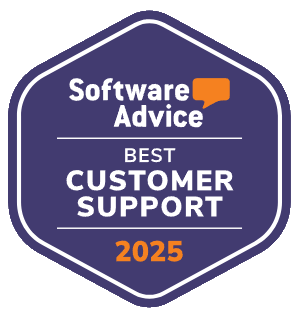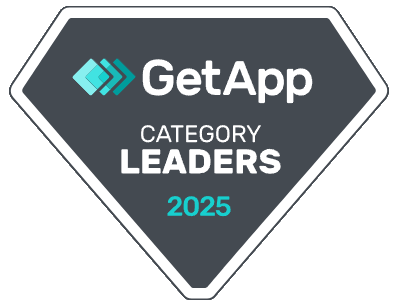Running customer support today is like managing a high-speed kitchen during the dinner rush—requests come flying in, expectations are high, and there’s no room for delay. That’s where the right helpdesk solution comes in: it organizes chaos, keeps teams on task, and ensures no issue falls through the cracks.
But not every helpdesk fits every business. Some are built for scale; others shine in simplicity. What matters is how well it aligns with your team’s daily workflows, support volume, and customer expectations.
This guide breaks down the top ten features to look for in a helpdesk platform—beyond the sales pitches—so you can choose a tool that improves response times, reduces agent fatigue, and grows with your business.

Here is the Quick Answer:
Choosing the right helpdesk solution is about more than just features—it’s about fit. Look for systems that offer streamlined ticket management, support across all channels, automation, analytics, and scalability. Security, user experience, and integration capabilities should also align with your team’s needs and growth. A well-chosen platform improves efficiency, strengthens customer relationships, and scales with your business.
The Importance of Choosing the Right Helpdesk Solution
Customer service is now a frontline brand differentiator. According to US-based digital care platform Khoros, 83% of customers say they feel more loyal to brands that respond to and resolve their complaints.1
Companies that prioritize swift and effective support stand to retain more users and reduce churn.
A modern helpdesk goes beyond ticket logging—it ensures customer satisfaction, reduces operational friction, delivers clear analytics, and supports replication of your support workflow across your team.
1. Ticket Management Capabilities
Ticket management is the core function of any helpdesk system. It’s what keeps customer requests organized and ensures nothing falls through the cracks. A strong ticketing system should deliver structure, speed, and flexibility—especially in high-volume environments.
Key elements to prioritize include:
Automated Ticket Routing
Ensure incoming tickets are automatically assigned to the right department or agent based on issue type, priority, or customer status. This reduces delays and gets problems in front of the right people immediately.
Customizable Ticket Fields
Choose a solution that lets you define ticket fields tailored to your business—such as product ID, location, or plan type—so your team captures context upfront and handles requests more accurately.
Ticket Prioritization Rules
Not every ticket is equal. A good system will let you set escalation tiers and urgency flags to ensure high-impact issues are addressed first.
SLA Tracking
Keep your team accountable with built-in service level agreement (SLA) timers. These tools highlight overdue tasks and send automatic alerts when time thresholds are at risk.
▶ Together, these features ensure a smoother support process, help your agents stay organized, and give customers faster resolutions. A ticketing system that lacks automation or flexibility can quickly become a bottleneck—especially as you scale.

2. Multichannel Support
Customers now expect to reach support through the channel of their choice—email, live chat, phone, social media, or even in-app messaging. A modern helpdesk must unify all those touchpoints into a seamless, manageable experience.
Key multichannel features to look for:
Unified Inbox
Centralize conversations from all channels in one queue. This prevents agents from juggling multiple tabs and reduces the risk of missing messages.
Channel-Specific Workflows
Email tickets, live chat sessions, and social media messages don’t all follow the same flow. Look for a system that supports channel-based rules and automation, so each request is handled appropriately.
Self-Service Options
A self-service portal with FAQs, community discussions, or a knowledge base empowers customers to resolve issues without waiting for agent replies, reducing ticket volume overall.
Cross-Channel Context
Ensure the platform maintains conversation history across channels. For example, if a customer emails first and later follows up on chat, agents should see the full context.
▶ A multichannel strategy isn’t just about offering more ways to get in touch—it’s about delivering consistent, fast, and informed support wherever the conversation starts.
3. Automation Features
Automation plays a key role in reducing repetitive tasks and boosting agent productivity. The right helpdesk should streamline operations while ensuring timely and accurate responses.
Key automation features to prioritize:
Automated Ticket Assignment
Use rule-based logic or AI to assign tickets based on factors like topic, urgency, language, or agent workload—minimizing delays and balancing team resources.
Canned Responses
Prewritten replies allow agents to respond quickly to common questions, improving consistency and shaving minutes off each ticket.
Escalation Rules
Automatically escalate unresolved or urgent issues to the appropriate team or tier after a set timeframe. This prevents bottlenecks and improves SLA compliance.
Follow-Up Triggers
Automatically escalate unresolved or urgent issues to the appropriate team or tier after a set timeframe. This prevents bottlenecks and improves SLA compliance.
▶ When implemented thoughtfully, automation creates space for human agents to focus on high-impact interactions—without sacrificing speed or service quality.
4. Knowledge Base Integration
A well-integrated knowledge base empowers both customers and support teams. It allows users to find answers independently while giving agents quick access to reference material—reducing ticket volume and improving resolution speed.
Key features to look for:
Searchable Content
Ensure articles are indexed and easy to find with keywords or filters. Fast search is crucial for usability.
Logical Categorization
Organize topics into clear sections or tags (e.g., billing, technical support, onboarding) so users don’t waste time digging for answers.
Multimedia Support
Include visuals—such as screenshots, GIFs, or videos—to guide users through more complex solutions and reduce misunderstandings.
▶ An integrated knowledge base not only lowers operational strain but also improves customer satisfaction by offering instant, 24/7 self-service support.

5. Reporting and Analytics
Data-driven insights are essential for evaluating and improving your support team’s performance. A helpdesk solution should offer tools that let you monitor key metrics, uncover trends, and guide decision-making in real time.
Custom Dashboards
Create dashboards tailored to your KPIs—such as average resolution time, SLA compliance, and customer satisfaction scores—to visualize trends in real time.
Ticket Metrics
Track ticket volume, backlog, response time, and agent performance. This data helps teams allocate resources, spot inefficiencies, and improve workflow.
Trend Analysis
Review historical patterns to identify recurring issues or seasonal spikes. Use these insights to build proactive support strategies and improve knowledge base content.
▶ Effective reporting helps you make decisions based on evidence, not assumptions. The best helpdesk systems turn support activity into actionable business intelligence.
6. User Interface and Experience
An intuitive interface allows your support team to work faster and with fewer errors. A cluttered or complex UI, on the other hand, leads to slower onboarding, inefficiencies, and frustration.
Clean Layout
A streamlined interface keeps agents focused by eliminating visual clutter and prioritizing key tools and workflows.
Ease of Navigation
Quick access to tickets, knowledge base entries, reports, and settings saves time and reduces missteps.
Customizability
Support teams differ—your UI should adapt. A platform that lets you rearrange dashboards, modify fields, and personalize views will better match internal workflows.
▶ A well-designed UI enhances speed and satisfaction on both sides of the support conversation—agents enjoy a better work experience, and customers get answers faster.
7. Integration Capabilities
No helpdesk operates in isolation. Seamless integration with your existing tools ensures support agents have the full context needed to resolve issues efficiently.
CRM Integration
Connecting your helpdesk with a CRM provides instant access to customer history, preferences, and purchase data—enabling more personalized and effective support.
Communication Platform Integration
Integrate tools like Slack, Microsoft Teams, or email clients to streamline internal collaboration and centralize alerts and updates.
E-Commerce and Billing Integration
For product- or service-based businesses, tying support to order history, subscription status, and transaction logs helps agents troubleshoot quickly and upsell where appropriate.
▶ Without integration, agents lose time switching between platforms. With it, workflows become smoother, data becomes actionable, and support becomes a strategic advantage.
8. Scalability and Customization
As your business evolves, so should your support system. A helpdesk that can’t keep pace with your growth will eventually slow you down.
Flexible Plans and Infrastructure
Your platform should scale with usage—whether you’re supporting 50 or 5,000 customers. That means adding agents, routing rules, or entire departments without reengineering the system.
Customizable Workflows and Roles
No two teams operate the same way. Look for systems that support custom ticket stages, department-specific automations, and role-based permissions so workflows stay aligned with how your teams work.
Supportbench Advantage
Supportbench enables tailored setup at scale. Whether you’re adjusting SLAs, redesigning escalation paths, or segmenting by client type, it gives you the tools to evolve without disruption.
▶ When your support platform flexes with your needs, you don’t just adapt—you stay ahead.

9. Security and Compliance
Protecting sensitive customer data isn’t optional—it’s essential. A reliable helpdesk platform must be built with security and compliance at its core.
Built-In Safeguards
Look for end-to-end encryption during data transmission and storage, plus role-based access controls to limit exposure to only what each team member needs.
Audit Trails and Logging
Every action taken in the system—ticket edits, user logins, escalations—should be recorded for compliance verification. This is critical for audits and internal accountability.
Supportbench Readiness
Supportbench provides advanced compliance capabilities like automatic audit logs, configurable data retention policies, and real-time SLA tracking. It supports global standards such as GDPR and HIPAA, making it ideal for highly regulated industries.
▶ In a data-sensitive world, your helpdesk isn’t just a support tool—it’s a security perimeter.
10. Customer Support and Training
Even the best helpdesk platform falls short without reliable support and clear onboarding.
24/7 Access to Help
Choose a provider that offers around-the-clock support, not just during business hours. When issues arise, quick access to experts ensures minimal disruption.
Detailed Documentation
Comprehensive guides, FAQs, and video walkthroughs empower teams to solve issues independently and onboard new staff with ease.
Hands-On Training
Look for live demos, onboarding calls, and modular training programs that adapt to different team roles and learning curves.
Supportbench Advantage
Supportbench offers personalized onboarding, white-glove migration support, and a self-serve knowledge hub. Whether you need one-on-one training or searchable documentation, it’s designed to fit MSP and mid-market needs from day one.
▶ Great support isn’t just reactive—it’s proactive, educational, and strategic.
Summary of Key Helpdesk Features and Use Cases | ||
Feature | Description | Priority Use Case |
Ticket Management Capabilities | Automated Ticket Routing, Customizable Ticket Fields, Ticket Prioritization, SLA Tracking | High-Volume Support Environments Where Managing Large Ticket Queues Is Crucial |
| Multichannel Support | Unify Communication Channels Like Email, Live Chat, Social Media, and Phone | Businesses Interacting with Customers Through Various Platforms |
Automation Features | Automated Ticket Assignment, Canned Responses, Escalation Rules, and Follow-Up Reminders | Reduces Agent Workload and Speeds Up Response Times for Routine Inquiries |
| Knowledge Base Integration | Searchable Articles, Categorization, and Multimedia Support | Reduces Incoming Ticket Volume by Allowing Customers to Self-Service |
Reporting and Analytics | Customizable Dashboards, Ticket Metrics, and Trend Analysis | Tracking Team Performance and Customer Satisfaction for Service Improvements |
| User Interface and Experience | Clean Layout, Ease of Navigation, and Customization Options | Support Teams Needing a System That Reduces Agent Training Time and Complexity |
Integration Capabilities | Seamless Integration With CRM, Communication Platforms, and E-Commerce Tools | Connecting Multiple Tools for More Cohesive Customer Data Management |
| Scalability and Customization | Flexible Pricing Plans, Customizable Workflows, and Role-Based Access Control | Scaling As Your Team Grows or Adapting Workflows to Fit Changing Processes |
Security and Compliance | Data Encryption, Access Control, and Compliance Certifications (GDPR, HIPAA) | Businesses Handling Sensitive or Personal Customer Data |
| Customer Support and Training | 24/7 Customer Support, Comprehensive Documentation, and Training Programs | Providing Ongoing Support and Resources for Team Success |
Conclusion
Choosing the right helpdesk solution is more than a technical decision—it directly shapes your customer experience, operational efficiency, and brand perception.
From managing high volumes of tickets to integrating communication channels and automating workflows, the best platforms support your team’s daily reality while preparing for future growth.
Focus on finding a system that aligns with how your support team works, adapts to your scaling needs, and protects sensitive customer data. Look for intuitive interfaces, seamless integrations, and strong analytics that empower smarter decisions and better outcomes.
Supportbench checks all these boxes. With easy integrations across CRMs, e-commerce, and communication tools, plus flexible automation and SLA tracking, it equips your team with the tools to deliver exceptional support—without added complexity.
👉 Book a free demo with Supportbench today and discover how the right helpdesk system can drive efficiency, loyalty, and growth.















